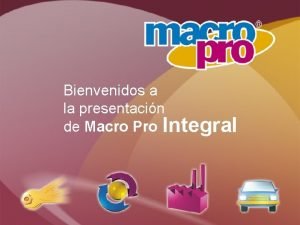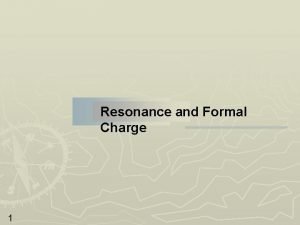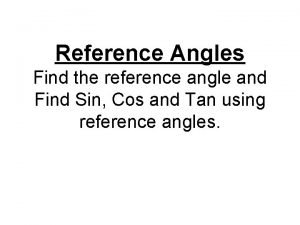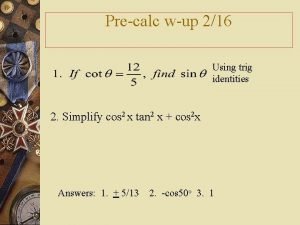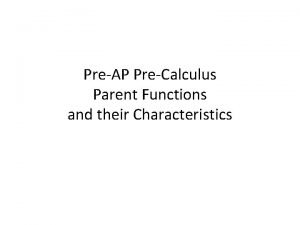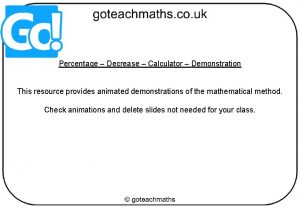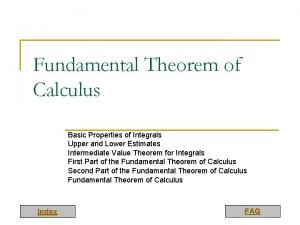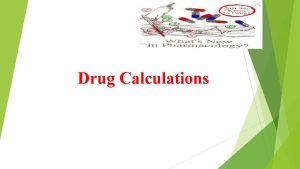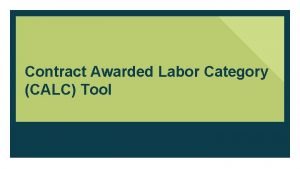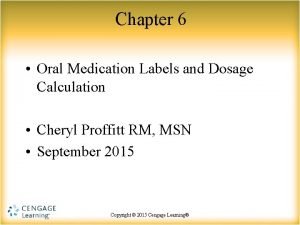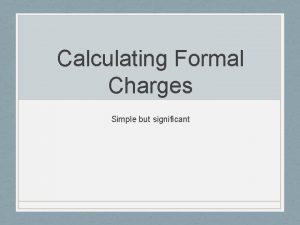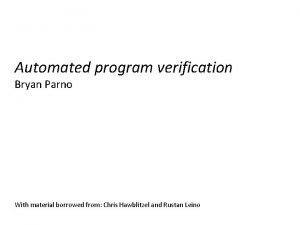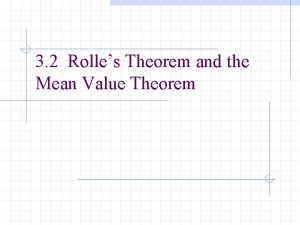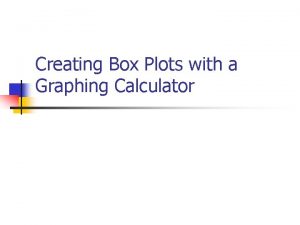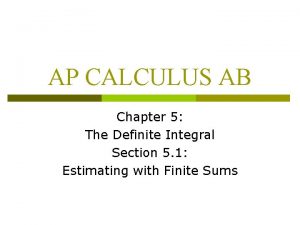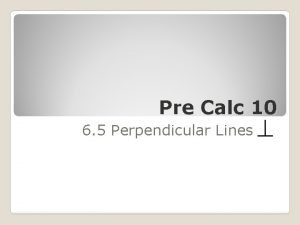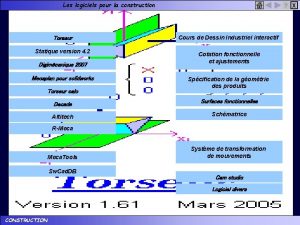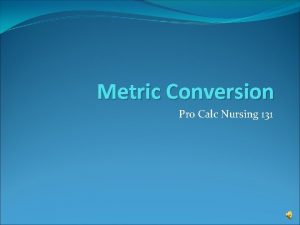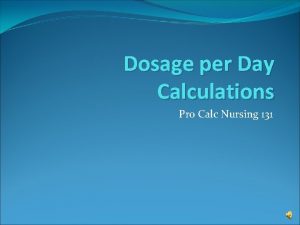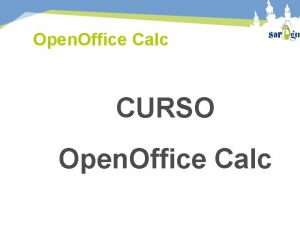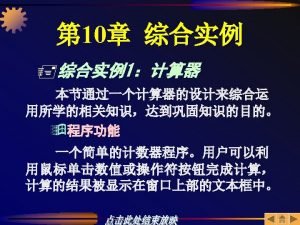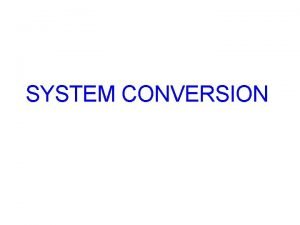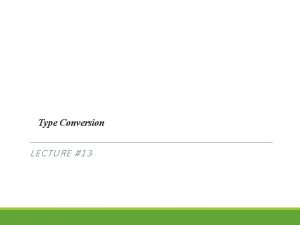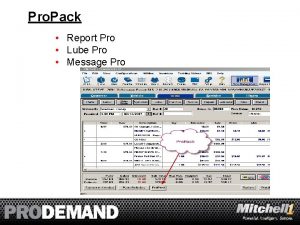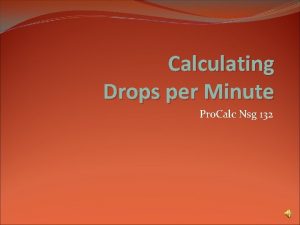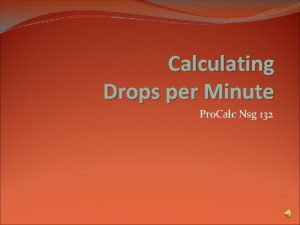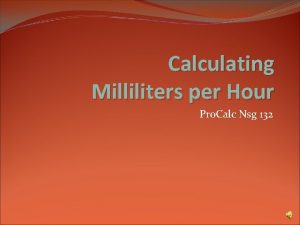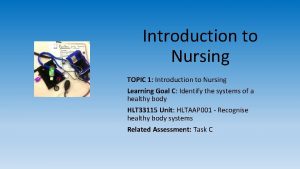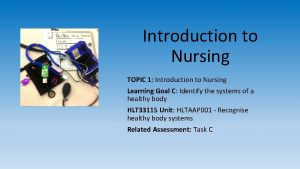Introduction to Unit Conversion Pro Calc Nursing 131

























- Slides: 25

Introduction to Unit Conversion Pro Calc Nursing 131

Introduction to Conversion Here are the 5 basic steps to change from one unit to another

Introduction to Conversion Here are the 5 basic steps to change from one unit to another Step 1 - Identify that you need to convert

Introduction to Conversion Here are the 5 basic steps to change from one unit to another Step 1 - Identify that you need to convert Step 2 – Write down what you have

Introduction to Conversion Here are the 5 basic steps to change from one unit to another Step 1 - Identify that you need to convert Step 2 – Write down what you have Step 3 – Write down your equivalent fraction

Introduction to Conversion Here are the 5 basic steps to change from one unit to another Step 1 - Identify that you need to convert Step 2 – Write down what you have Step 3 – Write down your equivalent fraction Step 4 – Reduce units

Introduction to Conversion Here are the 5 basic steps to change from one unit to another Step 1 - Identify that you need to convert Step 2 – Write down what you have Step 3 – Write down your equivalent fraction Step 4 – Reduce units Step 5 – Perform the math

Introduction to Conversion Step 1 - Identify that you need to convert Look for the key words such as “equivalent” or “convert” Another clue is that the question asks for how many of one type of unit is in a second type of unit For example : How many quarts are in 2 gallons of milk?

Introduction to Conversion Step 2 Write down what you have. Our example : How many quarts are in 2 gallons of milk? What do I start with? I have 2 gallons of milk. Write the amount you have as a fraction with the bottom number being one. (Writing the amount as a fraction will help us when we multiply later. )

Introduction to relating units Take a moment to consider how units relate. An equivalency chart will list how units relate to each other. For example: 1 gallon = 4 quarts

To convert, we will need to write our equivalent units one on top of the other. 1 gallon = 4 quarts can be written 2 ways. or or

Introduction to relating units Which way should I write my relating units? How to decide? ? ?

Introduction to relating units How to decide? ? ? It’s all about balance!

Introduction to relating units How to decide? ? ? It’s all about balance! We’ll balance the top with the bottom.

Introduction to relating units My first fraction has gallons on top 1 My next fraction needs to have gallons on the bottom 1

Introduction to relating units Step 3 Write down your equivalent fraction My first fraction has gallons on top Here’s what we write: 1 My next fraction needs to have gallons on the bottom x 1

Introduction to Conversion Step 4 Reduce Units. Cross off any matching pairs of unit labels. The label left should be what you want to find. x In this example the only unit label left is quarts.

Introduction to Conversion Step 5 Do the math! x

Introduction to Conversion Step 5 Do the math! x

Introduction to Conversion Step 5 Do the math! x

Introduction to Conversion Step 5 Do the math! x

Introduction to Conversion Step 5 Do the math! x

Introduction to Conversion Step 5 Do the math! x Two gallons is equal to 8 quarts!

Introduction to Conversion These are the steps we used. 1. Determine the need to perform a conversion (key words “equivalent to”, “convert”) 2. Write down the starting term 3. Find an equivalent fraction for the units. Write the equivalency down next to the starting term with the units you want to eliminate on the bottom 4. Reduce the units (Eliminate only the words that match in the top and bottom of your fractions. ) When you are finished you should have only the terms you are looking for left. 5. Perform the math operations and reduce your answer. (In some calculations you may need to round as specified by your instructions. )

Thanks for viewing the Yavapai College Verde Learning Center Introduction to Conversion Tutorial
 Macro pro
Macro pro Nursing metric conversion chart
Nursing metric conversion chart Calc institute of technology
Calc institute of technology Formula for formal charge
Formula for formal charge All students take calc
All students take calc Simplify radicals calc
Simplify radicals calc Pre ap precalculus
Pre ap precalculus Pg calc
Pg calc Percentage decrease calculator
Percentage decrease calculator Vectors precalculus
Vectors precalculus Second fundamental theorem of calculus
Second fundamental theorem of calculus Dose calculation formula
Dose calculation formula Calctool
Calctool Medication calculation
Medication calculation Formal charge equation
Formal charge equation Dafny calc
Dafny calc Winters formula md calc
Winters formula md calc Mvt calc
Mvt calc Thermocalc examples
Thermocalc examples Box plot calulator
Box plot calulator Epbb calculator
Epbb calculator Epics calc record
Epics calc record Ap calc ab chapter 5
Ap calc ab chapter 5 Calcmd
Calcmd Perpendicular line equation
Perpendicular line equation Torseur calc
Torseur calc
